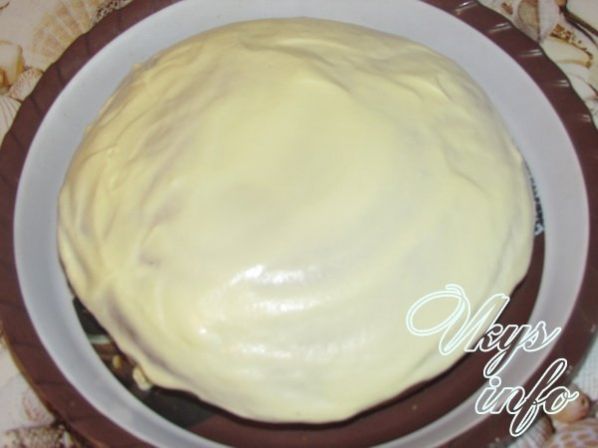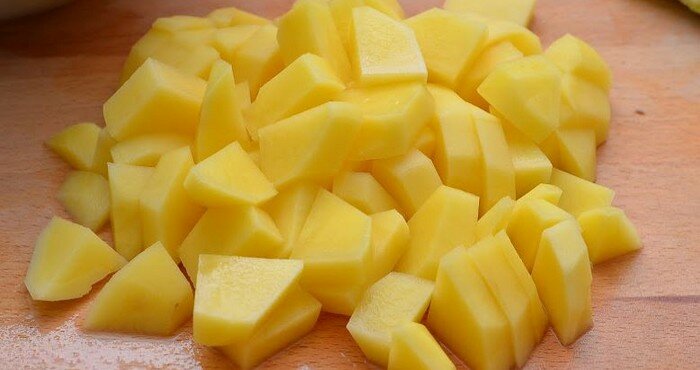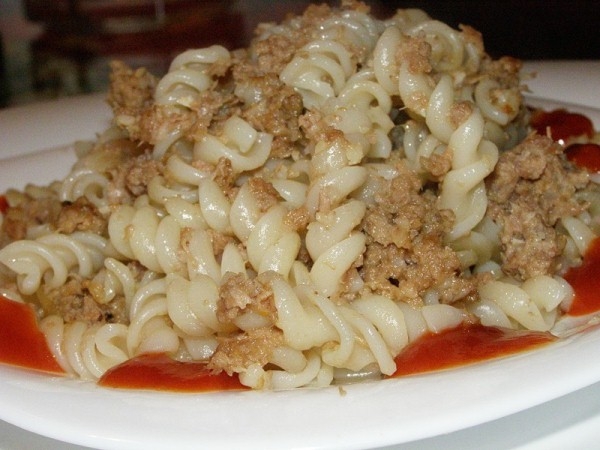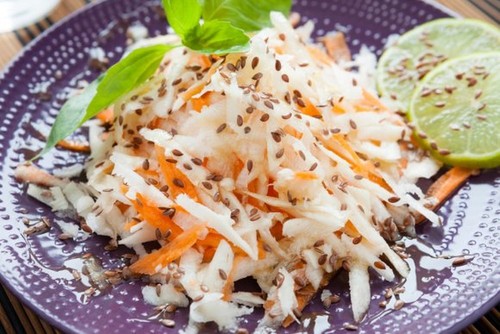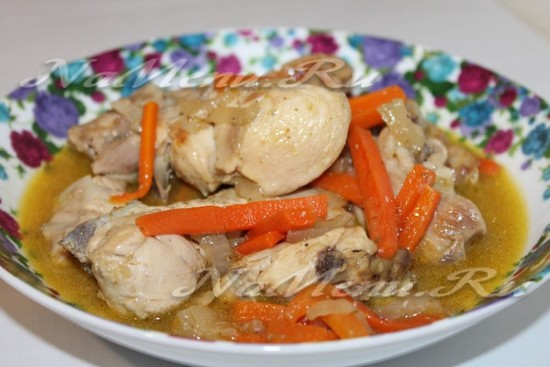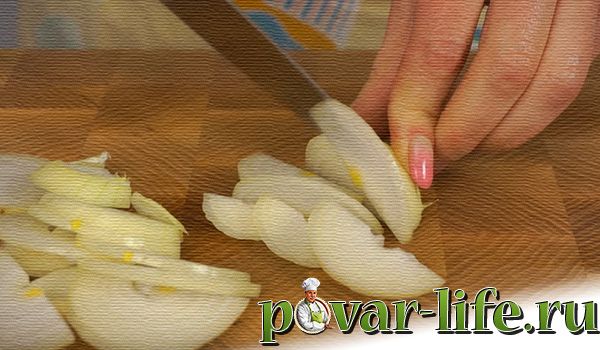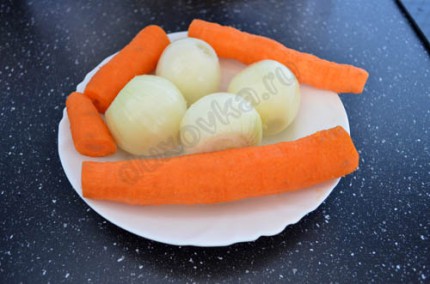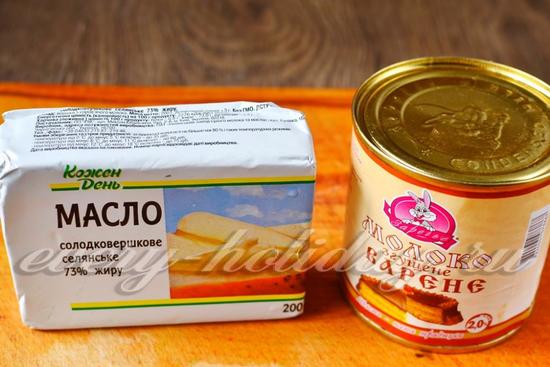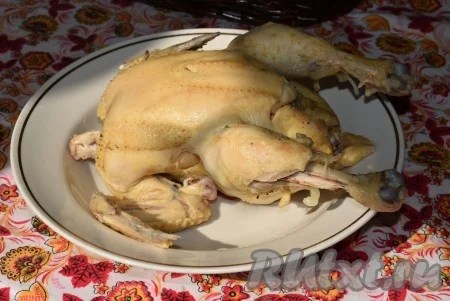Tea in Central Asia. Tea Traditions: Central Asia
In Uzbekistan, tea is considered a national drink. Historians claim that the Uzbeks drank back in the 19th century. Tea has always been consumed in large quantities. They drank it in small villages, in big cities. The drink was prepared in a small copper jug \u200b\u200b(kumgan). In wealthy families, they drank tea from.
Uzbek tea was expensive then, quality varieties were available only to rich people. Poor people drank mixtures that consisted of different herbs and low-quality tea leaves. Often used tea with milk, butter, pepper and salt.
Famous brand of Uzbek tea
Uzbek tea, produced under the brand name "Uzbek No. 95", is the most famous tea in Central Asia. It belongs to large-leaf elite teas. It has a characteristic tart taste. This drink cools the body well, quenches thirst, which is very important for the country's hot climate. The large leaves of this tea are helically twisted. When brewing, they unfold beautifully.
Once the great Avicenna said that tea should strengthen the spirit, refresh the body, arouse thoughts, soften the heart and drive away laziness. This statement goes well with green tea 95. Tea number 95 is grown on Chinese plantations. But they pack it in Uzbekistan itself. Here he is called Kok-cho. The production of tea is traditional, it goes through all stages of processing green tea - drying, drying, curling, final drying.
Useful properties of Uzbek tea
- Due to the content of fluoride strengthens teeth, nails, bones.
- Improves digestion.
- Beneficial effect on the work of the heart and the state of blood vessels.
- Lowers cholesterol.
- It has a calming effect on the nervous system.
- Normalizes metabolism.
The method of preparation of Uzbek tea
For the preparation of Uzbek green tea 95 take a porcelain teapot. It is thoroughly warmed up, covered with dry tea leaves of green tea. Pour hot water into a quarter of the volume of the kettle. The kettle must be placed in the open oven for a few minutes. Then take out, add half the kettle with water, cover it with a napkin, leave for three minutes.
Then add boiling water to the teapot up to 3/4 of the kettle’s volume, leave it under the lid for three minutes again. Only for the fourth time the kettle is topped up, after three minutes, it can be poured into cups. The owner, pouring a drink, pour a little tea, the less tea he poured into the guest’s cup, the more desirable this guest is. Each time, adding tea to a cup, he expresses his respect for the guest.

How to drink tea in Uzbekistan
An integral part of any feast in Uzbekistan is Uzbek green tea. It is brewed and served in accordance with Uzbek traditions. They prefer to drink 95 tea in large companies; for this they gather not only with their family, but also with friends in a teahouse. In specially equipped teahouses come to relax, chat. To protect visitors from the heat, trees are planted around the teahouse. The construction is painted with patterns, decorated with the sayings of the sages of the East, paintings.
18 have chosen
Acquaintance with tea among the Central Asian peoples took place before England and Europe - there were caravans of the Silk Road, which carried it along with other rarities. Tea in the culture of the peoples of Uzbekistan, Tajikistan, Kyrgyzstan, Kazakhstan takes up much more space than in European countries and even England.
Central Asia seems to be one territory, and the traditions are completely different, even tea ones!
Green tea from a bowl, tea with butter and salt, with camel milk and even sour cream - all this is a Central Asian tea party, with its own culture, customs and recipes. But there is one thing in common - special respect given to guests gathered at a tea table in a teahouse, around a fire in the steppe or on a nightmare in a yurt.
Uzbek teahouse ( teahouse): bowls with green tea and famous cakes, the most cultural holiday, because a teahouse is primarily communication, unhurried conversation and even business negotiations. Any meal begins with green tea, and ends with it: first, sweets, pastries, dried fruits and tea are served, then pilaf and other dishes, and then tea again.
Uzbek Coca-Tea: 1 teaspoon green tea is poured into a heated porcelain teapot. for each bowl plus one more, pour a quarter of water and hold over the hearth or in the oven, after a couple of minutes to half, after another 2 minutes pour the kettle over the kettle with boiling water and add water to ¾, after another 3 minutes - to the top. Before drinking tea at least three times getting married -poured into a bowl and poured back into the kettle.
A distinctive feature of the Uzbek tradition of tea drinking: the more respected the guest, the less tea the owner pours tea into the bowl. Usually a third of the bowls are poured, but with great respect they will pour less. Why is that? The fact is that in Uzbekistan it is considered a manifestation of respect for the frequent appeal to the owners for the supplement. The owner gives the guest this opportunity by pouring a minimum of tea, while showing that he himself is not a burden to serve the guest again. Pour tea in a special way so that bubbles remain on the surface. Only the uninvited and unwanted guest will be poured a full bowl!
Kazakh tea ceremony - with respect
If a Russian person drinks tea as much as he can, then a Kazakh drinks even more: 5-7 bowls for breakfast, lunch and dinner are normal. When do Kazakhs drink tea? Always: before everything and after everything. Tea drinking begins any feast and it ends it, competing with traditional koumiss. Kazakhs prefer black tea, calling it red by the color of the tea leaves - kyzyl tea. Especially for storing tea, sweets and sugar, Kazakhs have special wooden chests with a lock and legs - shay Sandyk.
The Kazakh tea ceremony will not yield to the Chinese one: only women, the housewife or the eldest daughter can pour tea, you should not mix bowls, the bowl should never be empty and it should not have tea leaves. They also pour it in their own way - exactly one-third, because tea must always be hot! But they will not be allowed to pour tea at a grand ceremony - it is believed that the daughter-in-law cannot pour tea! Only if the senior man in the family wants to praise the daughter-in-law for home-made tea drinking, he will say: “You pour good tea!” Besides tea, biscuits and cookies will certainly be served baursaki! If the guest is drunk, he does not talk about it - he shows: he knocks over the cup on the saucer, puts the bowl on its side or a spoon on the rim of the cup. And even after this, the owners will persuade them to drink another bowl! Tea is drunk for a long time, with easy conversation and cheerful conversation and not a word about deeds!
Tajik, Turkmen, Kyrgyz tea
Kabud tea -tajik green tea, and tea with milk - shirsha. They drink it only from bowls served on trays with sweets and cakes. As elsewhere in Central Asia, tea is always: for a meal, for conversation, and just tea. In Turkmenistan they drink black charachai and green kokchaygiving each a separate porcelain teapot with a bowl.
Turkmen The method of tea brewing, also adopted in Kazakhstan and Tajikistan, is based on the need to save water: a large faience kettle is heated by burying it in hot sand. Then pour black tea, about 25 grams per liter, and pour one glass of boiling water. When the infusion is sufficiently swollen, hot camel milk is poured and everything is thoroughly shaken or poured from the dishes into the dishes. After 10 minutes, cream and sugar are added. Of course, for the lack of camel, you can try this method of brewing with ordinary milk of the highest fat content.
Kyrgyz (Uyghur) Atkanchay (Etken Tea) - Perhaps the most famous of the unusual ways of drinking tea!
Black baikhovy tea is brewed very firmly and 1: 1 is added to the milk, salted and allowed to boil. Vesta with milk is added with butter, sometimes sour cream and boiled again. Poured into bowls, sometimes sprinkled with sesame seeds. This is a very satisfying drink, which is usually drunk for breakfast. Etken tea is considered the invention of the nomads as instant food. Kirghiz tea is drunk with tortillas, baursaks (sliced \u200b\u200bdough pieces fried in oil), dried fruits, honey.
Some common features of Central Asian tea drinking: bowls, low table dastarkhanlow seats sufa, leisurely conversationand a bathrobe, quilted of course!
The ways of drinking tea in Central Asian may seem very strange to you in taste, but their health benefits are undeniable.
Good tea party!
Abashin S.N.
Tea is an amazing drink. So they say about its taste and healing properties, one can also say about its cultural and social role. In all modern nations, which include tea in their kitchen, the drink is mystified, endowed with sacred qualities, is considered a "soul", a symbol of the people. Such an attitude is all the more surprising since, for most peoples, tea appeared by historical standards rather late.
The history of tea is the history of cultural and social changes in society. At the beginning of I millennium AD he was known only to the southern Chinese. Only in the VIII-X centuries., Having received recognition in Buddhism as a sacred drink, tea penetrates into China, Tibet and Japan and becomes an export item. In most other Asian countries, tea penetrates as far back as the 2nd millennium AD, first into the regions where Buddhism spread, and then Islam and Christianity. At the same time, there is a curious pattern: where coffee is drunk, tea is less popular - thus the world is conditionally divided into those who prefer tea and those who give priority to coffee. This remarkable fact has a social and cultural explanation rather than a biological one, since coffee and tea are not interchangeable drinks in terms of their properties.
In 1517, the Portuguese brought tea to Europe from China, and for about 100 years only representatives of the Portuguese nobility drank it. In 1610, tea appeared in Holland. In 1664, the Portuguese princess became the wife of the English king, with her the custom to drink tea came to the royal court, after which the new English fashion began to spread rapidly in Europe among the nobility, merchants and citizens. The drink became extremely popular, and trade in it turned into a profitable economic enterprise. It was because of trade duties on tea in 1773 that the Boston Tea Party took place, from which the Great Britain began its war with its North American colonies, ending with the formation of a new state - the USA.
Tea was first brought to Russia in 1638 by Ambassador Vasily Starkov as a gift from a West Mongol ruler. The tsar and the boyars liked the drink and already in the 1670s became the subject of import into Moscow. Until the end of the 18th century tea was a "city" drink and was widely sold only in Moscow. As noted by V.V. Pokhlebkin, there are many factors that should have hindered the distribution of tea — the presence of competing drinks, other people's raw materials, the need for special knowledge and equipment, the high cost, conservatism of customs: "... but the miracle is tea, despite all these material obstacles, domestic, psychological and cultural in nature on its way to spread among the people, managed to nevertheless turn into a truly Russian (...) national drink, moreover, such a drink, the absence of which became simply unthinkable in Russian society, and the sudden whose appearance from everyday life, say, at the end of the 19th century, could lead, without exaggeration, to a national disaster (...) tea, which appeared in Russia in the 30s of the 17th century and began to turn into a folk drink in Moscow after 50 years after that, by the beginning of the 19th century, that is, over some one and a half hundred years, it became absolutely indispensable, obligatory ... "
In 1714, they drank tea in Kazan, although it was still an expensive pleasure, but by the XIX century. tea party "... so much became a part of the Tatar way of life that without it not a single holiday was conceived ...". Thus, there is a general pattern: in most cases, tea becomes a "folk" drink only in the 19th-20th centuries, having first traveled from the noble houses to city shops, and then to the countryside. Tea traveled all this way in Central Asia.
The first news about tea was found by the traveler A. Olearia, who wrote that in the capital of Persia, Isfahan in the 1630s there were "Tzai Chattai Chane", i.e. "... tavernas in which they drink foreign warm water (...) black (dark) water, a decoction from a plant brought by the Uzbek Tatars to Persia from China (...) This is exactly the plant that the Chinese call tea (. ..) The Persians boil it in clean water, add anise, dill, and some a little clove ... ". This message directly indicates that already at the beginning of the XVII century. tea was known not only to the Persians, but also to the "Uzbek Tatars", i.e. residents of Central Asia. However, this is almost the only indication in written sources that confirms such an early acquaintance of the inhabitants of the region of interest to us with a drink. As noted by E.M. Peshchereva, who conducted a special study of this problem, "... if we summarize all our data on the time when tea began to spread widely (...), with the exception of Bukhara, in Central Asia, this time falls at the beginning of the second half of the 19th century, for rural areas on the plain - at the very end of the XIX century. and for mountainous areas of Tajikistan - at the XX century. " . In Bukhara, they drank tea already in the XVIII century., And only to know. In addition to the question of when, the question of where comes from. This problem is worth dwelling in more detail.
The origins of tea distribution in Central Asia could have been Chinese. There is quite obvious evidence of this. Written sources contain a reference to the fact that in the middle of the XVIII century. Chinese ambassadors brought the satin fabrics and tea to the Kokand ruler Irdan. China and Chinese culture have always influenced the regions of Central Asia. At the beginning of I millennium AD the Chinese have repeatedly tried to establish their dominance there. Throughout the Middle Ages, Sino-Central Asian relations periodically resumed and then again interrupted for a long time. These relations were quite intense in the 18th-19th centuries. In the XVIII century. the Manchu Qing dynasty rushed west. In the middle of the century, China conquered the Dzungar Khanate, under the actual authority of which were many regions of Central Asia. The Chinese tried to assert their influence throughout the territory belonging to the Dzungars. This was done in East Turkestan (the current Chinese province of Xinjiang). In 1758, the Kyrgyz sent ambassadors to Beijing, effectively recognizing the Chinese protectorate. In the same year, the Kokand ruler Irdan-biy also recognized the protection of the Chinese, which was then confirmed by the next ruler of Norbut-biy. This recognition was not entirely voluntary and was accompanied by the Chinese military campaigns in the Ferghana Valley. There is, for example, a report on the invasion of the 9,000th Chinese army in 1759 (or 1760), which, however, ended in the defeat of the Qing troops. In the very center of the Ferghana Valley, on the banks of Yazyavan-Say, near the city of Margelan, according to local residents, there was a place of bloody battle with the Chinese. In the XIX century. few Chinese were captured in the Ferghana Valley as a result of a series of wars that took place between China and Kokand this century. These prisoners converted to Islam and merged with the surrounding nations. Diplomatic contacts were less intense. According to the testimony of C. Valikhanov, the last Chinese in Kokand was at the accession to the throne of Sherali Khan in 1842, then he came to the mourning ceremony - to the mourning bonfire on the murdered Khan Modali, after which the "native people" became envoys of China in Kokand.
Despite all this, it is unlikely that the Chinese could be the main distributors of tea fashion in Central Asia. Direct contacts of the population of the two regions were not very long and were carried out mainly in the form of political, ideological and military confrontation. The influence of China on the penetration of tea into Central Asia was most likely indirect. First of all, it is about trade. In the late XVIII - early XIX century. Chinese tea in the form of pressed tiles was very popular in Central Asian cities. According to C. Valikhanov, at the beginning of the XIX century. "all of Central Asia and Afghanistan used tea brought through Kokand from Kashgar, and the use of tea" became ubiquitous, and when the Chinese closed the border, in 1829 "Kokandans decided to open up trade with arms in their hands." This influence was reflected in one of the names of milk-whitened tea - "synch" (Chinese tea), as well as in the popularity of Chinese tea utensils.
Rejecting the point of view of the direct borrowing of tea from the Chinese, E.M. Peshchereva suggests that tea was distributed in Central Asia by the Mongols, who were in much closer relations than the Chinese with the Central Asian population. In modern traditions of Ferghana residents, Kalmyks are often considered as the indigenous, most ancient population of Ferghana. True, in this case the Kalmyks are confused with the “mugs” (Kal-Mug), the ancient non-Muslim population of Central Asia. Nevertheless, despite this confusion, the traditions reflect the really huge role that the Kalmyks played in the history of the Ferghana Valley and throughout Central Asia in the late Middle Ages.
Kalmyks belong to the West Mongolian tribes, which, according to written sources, are also known as “Dzungars” or “Oirats”. Already in the XVI century. Kalmyks fought with the Kazakhs, and in the XVII century. attacked Khorezm and Tashkent, negotiated a military alliance with the Bukhara rulers, and raided the vicinity of Bukhara. At the beginning of the XVII century. in the hands of the Kalmyks was Mangyshlak, where the future Khiva ruler Abulgazi was hiding from them. In the middle of the XVII century. Kalmyks gained the upper hand over some Turkmen uluses, after which they attacked the region of Astrabad (northeastern Iran) and sent ambassadors to the Persian Shah. In the middle of the XVII century. the so-called Dzungar Khanate is formed, which begins expansion to the west. In the 1680s, the Dzungarian ruler Galdan captured all of East Turkestan, made campaigns on Sairam (present-day South Kazakhstan), fought with the Kyrgyz and the inhabitants of Ferghana. In 1723, the Dzungarian troops captured the cities of Sairam, Tashkent, Turkestan, Suzak, etc. In the same year, the Dzungarian ruler sent ambassadors to the Bukhara ruler from the Ashtarkhanid dynasty and threatened to seize Samarkand and even Bukhara itself. According to conflicting information, the Dzungars actually owned at the beginning of the XVIII century. Khojent, Jizzakh, Margelan. There is evidence that under their nominal authority there were "some lands of Desht-i Kipchak (the territory of modern Kazakhstan and the northern part of Turkmenistan, some southern regions of Russia. - S.A.) and Iran, as well as Badakhshan (modern north-eastern regions of Afghanistan. - S.A.), Tashkent, Kuram (Kurama. - S.A.) and Pskent ... ". Dzhungars repeatedly sent troops to conquer Chitral, Badakhshan, Darvaz and Karategin. The influence of the Dzungars was so significant that in the first half of the XVIII century. predictions were popular in Bukhara: power in Maverannahr should go from Uzbeks to Kalmyks, as it once passed to the Uzbeks from the Timurids.
Acquaintance with tea among the Central Asian peoples took place before England and Europe - there were caravans of the Silk Road, which carried it along with other rarities. Tea in the culture of the peoples of Uzbekistan, Tajikistan, Kyrgyzstan, Kazakhstan takes up much more space than in European countries and even England.
Central Asia seems to be one territory, and the traditions are completely different, even tea ones! Green tea from a bowl, tea with butter and salt, with camel milk and even sour cream - all this is a Central Asian tea party, with its own culture, customs and recipes. But there is one thing in common - special respect given to guests gathered at a tea table in a teahouse, around a fire in the steppe or on a nightmare in a yurt.
Uzbek teahouse (teahouse): cups with green tea and famous cakes, the most cultural holiday, because a teahouse is primarily communication, unhurried conversation and even business negotiations. Any meal begins with green tea, and ends with it: first, sweets, pastries, dried fruits and tea are served, then pilaf and other dishes, and then tea again.


Uzbek coca tea. 1 teaspoon green tea is poured into a heated porcelain teapot. for each bowl plus one more, pour a quarter of water and hold over the hearth or in the oven, after a couple of minutes to half, after another 2 minutes pour the kettle over the kettle with boiling water and add water to ¾, after another 3 minutes - to the top. Before drinking tea, they marry at least three times - they pour it into a bowl and pour it back into the teapot.



A distinctive feature of the Uzbek tradition of tea drinking: the more respected the guest, the less tea the owner pours tea into the bowl. Usually a third of the bowls are poured, but with great respect they will pour less. Why is that? The fact is that in Uzbekistan it is considered a manifestation of respect for the frequent appeal to the owners for the supplement. The owner gives the guest this opportunity by pouring a minimum of tea, while showing that he himself is not a burden to serve the guest again. Pour tea in a special way so that bubbles remain on the surface. Only the uninvited and unwanted guest will be poured a full bowl!
Kazakh tea ceremony - with respect


If a Russian person drinks tea as much as he can, then a Kazakh drinks even more: 5-7 bowls for breakfast, lunch and dinner are normal. When do Kazakhs drink tea? Always: before everything and after everything. Tea drinking begins any feast and it ends it, competing with traditional koumiss. Kazakhs prefer black tea, calling it red by the color of the tea leaves - kyzyl tea. Especially for storing tea, sweets and sugar, Kazakhs have special wooden chests with a lock and legs - Shay Sandyk.
 The Kazakh tea ceremony will not yield to the Chinese one: only women, the housewife or the eldest daughter can pour tea, you should not mix bowls, the bowl should never be empty and it should not have tea leaves. They also pour it in their own way - exactly one-third, because tea must always be hot! But they will not be allowed to pour tea at a grand ceremony - it is believed that the daughter-in-law does not know how to pour tea! Only if the eldest man in the family wants to praise the daughter-in-law for home-made tea drinking, he will say: “You pour good tea!” In addition to jam-cookies, baursaks will certainly serve tea! If the guest is drunk, he does not talk about it - he shows: he knocks over the cup on the saucer, puts the bowl on its side or a spoon on the rim of the cup. And even after this, the owners will persuade them to drink another bowl! Tea is drunk for a long time, with easy conversation and cheerful conversation and not a word about deeds!
The Kazakh tea ceremony will not yield to the Chinese one: only women, the housewife or the eldest daughter can pour tea, you should not mix bowls, the bowl should never be empty and it should not have tea leaves. They also pour it in their own way - exactly one-third, because tea must always be hot! But they will not be allowed to pour tea at a grand ceremony - it is believed that the daughter-in-law does not know how to pour tea! Only if the eldest man in the family wants to praise the daughter-in-law for home-made tea drinking, he will say: “You pour good tea!” In addition to jam-cookies, baursaks will certainly serve tea! If the guest is drunk, he does not talk about it - he shows: he knocks over the cup on the saucer, puts the bowl on its side or a spoon on the rim of the cup. And even after this, the owners will persuade them to drink another bowl! Tea is drunk for a long time, with easy conversation and cheerful conversation and not a word about deeds! 
Kabud tea is Tajik green tea, and milk tea is shirsha. They drink it only from bowls served on trays with sweets and cakes. As elsewhere in Central Asia, tea is always: for a meal, for conversation, and just tea. In Turkmenistan, they drink black charachai and green kokchai, serving each a separate porcelain teapot with a bowl. 

Adopted also in Kazakhstan and Tajikistan, it is based on the need to save water: a large earthenware kettle is heated by burying it in hot sand. Then pour black tea, about 25 grams per liter, and pour one glass of boiling water. When the infusion is sufficiently swollen, hot camel milk is poured and everything is thoroughly shaken or poured from the dishes into the dishes. After 10 minutes, cream and sugar are added. Of course, for the lack of camel, you can try this method of brewing with ordinary milk of the highest fat content. 

- Perhaps the most famous of the unusual ways of drinking tea!
Black baikhovy tea is brewed very firmly and 1: 1 is added to the milk, salted and allowed to boil. Vesta with milk is added with butter, sometimes sour cream and boiled again. Poured into bowls, sometimes sprinkled with sesame seeds. This is a very satisfying drink, which is usually drunk for breakfast. Etken tea is considered the invention of the nomads as instant food. Kirghiz tea is drunk with tortillas, baursaks (sliced \u200b\u200bdough pieces fried in oil), dried fruits, honey. 





Some common features of the Central Asian tea party: bowls, a low table dastarkhan, low seats, a leisurely conversation and a bathrobe, quilted of course!
The ways of drinking tea in Central Asian may seem very strange to you in taste, but their health benefits are undeniable.
Good tea party! 


As a rule, in Central Asia they drink green tea in the summer and black in the winter. In summer, tea cools the human body, in winter it warms. In the hot season, when the air temperature in the shade is +30 - + 40 ° and higher, green tea gives energy and quenches thirst more than black. They call it coca-tea and prepare it like this: a porcelain teapot is poured with boiling water and dried with a sweeping motion. Then, take 2 teaspoons of green tea for a half-liter teapot and pour boiling water to the top with steep boiling water. Using a bowl 4 times mix, pouring it until an olive-yellow tint. After infusion, tea is first poured to the guest, filling the bowl 1/3, so as not to get burned and comfortable to hold, and besides, the tea manages to cool. When tea is drunk from the bowl, the tea leaves are poured into an empty glass. When brewing black tea, they do the same, but they take less tea: Georgian
- 1.5 teaspoons, and Indian or Ceylon
- 1 incomplete spoon.
There is another, more economical way of brewing tea, reducing the brewing by 0.5 teaspoon when preparing green and black tea and placing the kettle after brewing on a metal plate above the gas burner. The tea is brought to a boil, boiled for 30 seconds and quickly removed from the plate (or from charcoal fire, as is done in Kyrgyzstan), the lid is opened, then tightly closed and poured.
And now some recipes for making tea.
To make tea, they take a porcelain teapot using freshly made boiling water for brewing. Before brewing, the kettle is heated, rinsed with boiling water, brewed in 1/3 of the volume of the kettle and left for 5-8 minutes to infuse, after which boiling water is added. To improve the taste, color, aroma, sometimes in order to better extract (extract) nutrients, coloring and aromatic substances, a piece of sugar or a few grains of salt is added when brewing. To enhance the aroma, the teapot with tea leaves can be wrapped in a towel or put under a special cap. In this form, the tea leaves do not cool for a long time. The shelf life of the finished tea leaves is 15 minutes, after which the tea loses its aroma, taste and color. Tea is served with sugar, jam, honey, jam, jam, with cream, milk, lemon, juice. Tea is served in tea pairs or thin glasses. Fillers
- in a milk jug, creamer or outlet.
Dry tea (brewing) - 1.5 g, sugar - 50 g, or lemon - 1) 4 pcs., Or jam, jam, jam, honey - 80 g,
milk or cream - 150 g.
